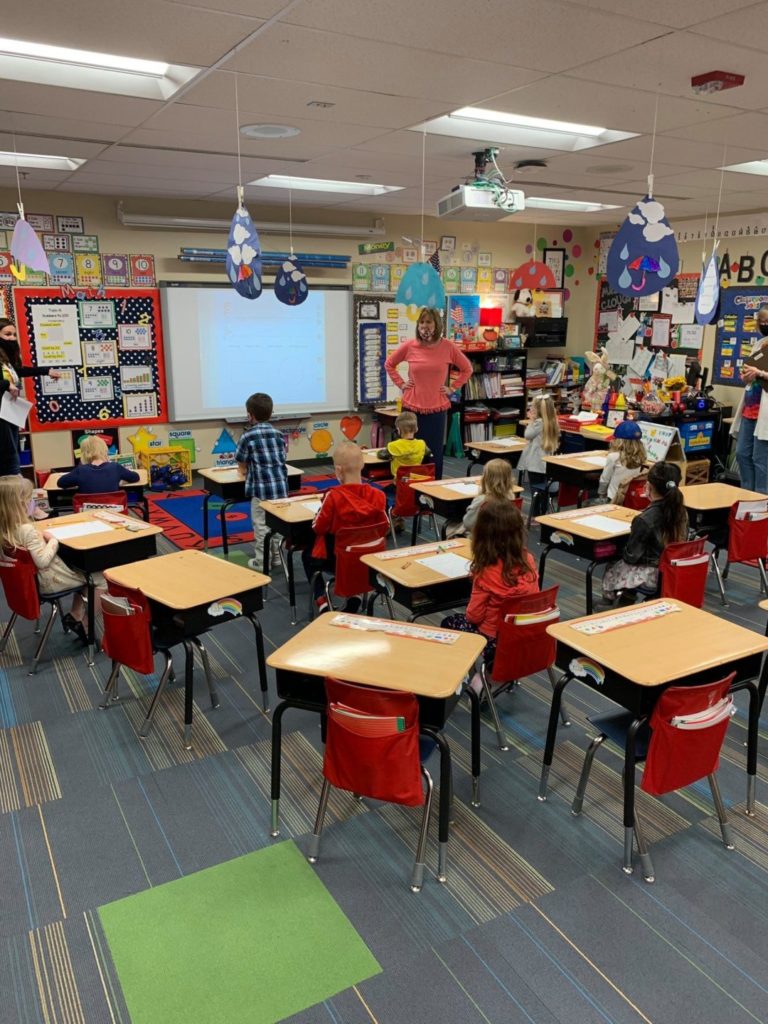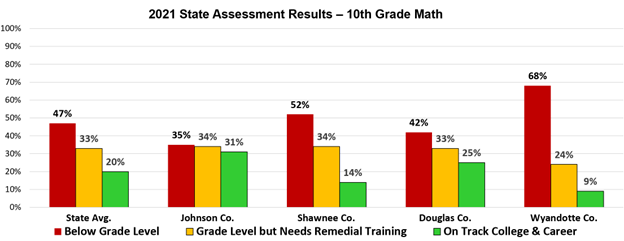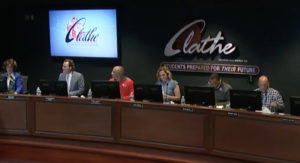Kansas publication aids and abets student achievement cover-up
(The Sentinel) – It’s bad enough that there are more high school students below grade level in Kansas than are proficient. But media aiding and abetting education officials’ cover-up attempts…

(The Sentinel) – It’s bad enough that there are more high school students below grade level in Kansas than are proficient. But media aiding and abetting education officials’ cover-up attempts demonstrates that the public education system will not let students’ needs get in the way of its institutional interests.
State Senator Cindy Holscher (D-Overland Park) recently moderated a panel discussion with a retired school superintendent, a director of special education, and a retired teacher. They collectively alleged that Johnson County schools are “collapsing” because of efforts they say are “undermining our educational institutions.” But there was one issue glaringly absent – student achievement – and they weren’t very happy when I shared the reality of student achievement with the audience.
The Kansas Reflector reports that I asked the panel and Senator Holscher how many years they thought it would take to get all students to grade level, but they left out the basis for my question:
- According to the Kansas Department of Education state assessment results, there are more high school students below grade level in Kansas and parts of Johnson County than are proficient.
- Per-student spending is growing much faster than inflation over time and was the 11thhighest in the nation in 2020, adjusted for the cost of living. Now, it’s likely among the top ten.
- Achievement has been declining in Kansas while the nation overall has been improving.

Predictably, the panelists and Senator Holscher made disparaging remarks my way…but they didn’t dispute the facts I cited about student achievement or school funding.
For years, state and local education officials have been consciously deceiving parents and legislators about student achievement…de-emphasizing academics in favor of social-emotional learning…ignoring state laws designed to close achievement gaps for the most vulnerable students…and ignoring Department of Education guidance.
They’ve made it quite clear that the system is focused on sustaining the system and the adults who work in it. And the system isn’t about to change of its own volition because Kansas education officials oppose the things that are dramatically improving achievement in Florida and other states.
In 1998, Florida was one of the worst states in the nation, but now, Florida is one of the best. As explained by Florida officials in Giving Kids a Fighting Chance, they did it with a combination of choice, transparency, and accountability.
Former Lieutenant Governor, Senate President, and teacher Toni Jennings speaks to the benefits of competition that comes with robust school choice options.
“The more competition we had in education, the better off we became. So I for one believe that competition is good. But you will hear those who say, “Oh no, you’re making the public schools compete with others.” Well, those children are going to have to go out and compete with others in the workaday world.”
To help parents understand the depth of the achievement issue, Florida translated nebulous state assessment results into labels everyone understands – A, B, C, D, and F. That transparency created pressure on schools to improve, and they responded. By 2002, about half received an A or a B, and only 11% were D/F schools. Florida raised the A–F standards in 2002 to make it more challenging to get high grades, and they did so eight more times by 2016.
Florida’s third-grade reading initiative placed more accountability on educators and parents. Legislators passed a law that requires every student to demonstrate a level of mastery and foundational reading skills before going on to fourth grade. This is a critical time for students because they transition from learning to read to reading to learn. And research shows children who are not reading proficiently by the end of third grade are four times more likely to drop out or fail to graduate from high school. For poor Black and Hispanic students, that likelihood doubles.
Florida now does better than Kansas on six of the eight key performance measures on the National Assessment of Educational Progress, and the states are tied on one measure. And they accomplished this remarkable turnaround while spending about $5,000 less per student than Kansas.
Kansas students can enjoy the same dramatic improvements if parents convince more legislators to put student interests above institutional demands and pass more choice, transparency, and accountability measures.



